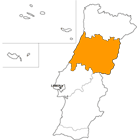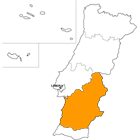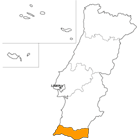Protected Areas in Portugal
The Institute for Nature Conservation (Instituto da Conservação da Natureza) is a division of the Ministry of the Environment, Territory, and Regional Development (Ministério do Ambiente, do Ordenamento do Território e do Desenvolvimento Regional - MAOTDR) and focuses on the study and spotting of endangered habitats and species, as well as on the management of Protected Areas.
In Portugal, the nature conservation policy acquired importance in the 70s, when the Law no. 9/70 of 19th June regarding the establishment of Protected Areas was issued. After 25th April 1974, with the Decree-Law no. 550/75 of 30th September, the Environment State Secretariat was created, together with the National Park, Reserve, and Landscape Heritage Service (Serviço Nacional de Parques, Reservas e Património Paisagístico - SNPRPP), a body with legal competency, administrative and financial autonomy, the future ICN.
With the Decree-Law no. 49/83 of 31st January, in the 80s the National Park, Reserve, and Nature Conservation Service was created (Serviço Nacional de Parques, Reservas e Conservação da Natureza - SNPRCN).
With the Decree-Law no. 19/93 of 23rd January, in 1993 the new legal regime for the classification of the Protected Areas was elaborated and with the Decree-Law no. 193/93 of 24th May the Institute for Nature Conservation was born.
The present Portuguese legislation regarding Protected Areas includes five categories: National Parks, Nature Parks, Nature Reserves, Natural Monuments, and Protected Landscapes.
National Parks
Areas characterized by ecosystems that have not been significantly altered by man and represent characteristic natural regions, natural landscapes or landscapes with human settlements, geomorphological aspects or habitats where species of ecological, scientific, and educational interest live.
Nature Parks
Areas characterized by the presence of natural and semi-natural landscapes and landscapes with human settlements of national interest, representing the harmonious integration between human activities and natural environment, examples of biotopes or natural regions.
Nature Reserves
Areas dedicated to the protection of habitats housing flora and fauna.
Protected Landscapes
Areas characterized by the presence of natural and semi-natural landscapes and landscapes with human settlements of regional or local interest, resulting from the harmonious interaction between man and nature; places of great aesthetic or natural value.
Natural Monuments
Natural areas characterized by one or more aspects which, for their uniqueness, rarity, and representativeness in ecological, aesthetic, scientific, and natural terms need conservation and maintenance measures.
Source: Instituto da Conservação da Natureza
|







